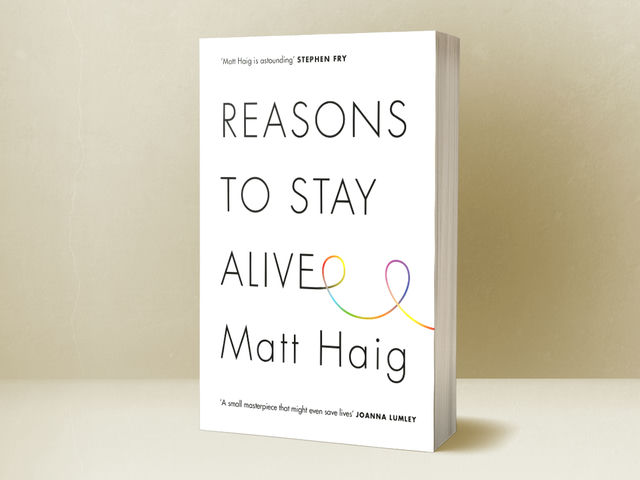Reasons to Stay Alive
Matt Haig, 2015
When he was 24, author Matt Haig suffered an emotional breakdown and tried to take his own life. In this short book he takes a brief look at the journey he took trying to overcome the depression and anxiety that had led him to contemplate suicide.

In the midst of depression I walked out to the edge of the cliff and looked at the sea, and at the rugged limestone coastline, dotted with deserted beaches. It was the most beautiful view I had ever known, but I didn’t care. I was too busy trying to summon the courage needed to throw myself over the edge. I didn’t. Instead, I walked back inside and threw up from the stress of it.
Matt Haig
I’ve had my own struggles with depression and anxiety for the last 16 years. In 2000 I had an emotional breakdown and since then have undertaken myriad therapies, some better than others. These days I’m more at peace with my situation, but I’m not “cured” and I will likely always have days where I struggle to leave the house. So I was intrigued to see what insights Haig had gleaned from his own experiences and whether his book might help me.
Reasons to Stay Alive is written as a memoir interspersed with pages of advice or encouragement. It’s a slightly odd way to tackle such a personal subject and I was puzzled by this approach.
Haig writes the confessional parts of this book with honesty and humour and it’s a very easy read. In fact, this material is so easy to understand that I think it’s why it’s been so celebrated: Haig has shined a light on depression in a way few have before, and for that reason alone the book is very valuable. However, I thought there was a significant lack of depth to much of the material: for such a complex subject, I didn’t get much insight into Haig’s understanding of his own illness.
I’m unclear about the value of the “self help” aspect of this book. There are many pages of motivational quotes, some of which are rather cringe-worthy and unlikely to help anyone. There are also lists of things that Haig tried to help him climb out of depression. He does not take any drugs, preferring to rely on more active remedies such as yoga, mindfulness or running. All the suggestions for things to do are good, but I had the nagging feeling that many are just basic common sense and could be perceived as rather lightweight.
There are disclaimers abound, which is necessary – this is clearly not medical advice. It felt more like a school textbook at times: pages of knowledge followed by random exercises. On that front I don’t think it worked very well.
Personally I’m cautious about taking Haig’s experiences and remedies as any kind of gospel about my own depression, or how to fix it. My own experiences are highly personal and while there’s comfort in sharing Haig’s journey, I know that my own journey has taken a different path and will continue to do so.
This is an important book. It tackles depression in a way that’s easy to understand for anyone who’s never experienced it. And for those of us with similar problems there is much to nod along to. Knowing that we’re not alone is a powerful thing and for that I commend Haig for sharing his journey with us.